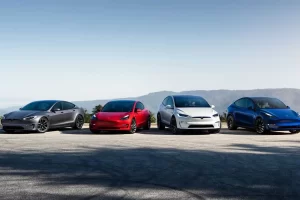Tesla has launched its Virtual Power Plant (VPP) program in California, allowing customers to utilize their Powerwall batteries and solar panels to help the state’s grid. While the VPP seems to be a pilot program in California for now, Tesla CEO Elon Musk has noted that the capability to donate spare battery capacity to the grid would become extremely important over time.
As noted by Tesla on its Support Page, the California grid operator has forecasted a need for residents (who are able) to support the grid through 2021. Tesla Powerwall customers could do their part by helping create one of the largest distributed battery systems in the world. By doing so, the state could become less reliant on older, dirtier, more inefficient solutions such as peaker plants.
The California Virtual Power Plant is available to PG&E, SDG&E, and SCE customers who own both Tesla Powerwall batteries and solar panels. Tesla noted that the VPP program opens doors to numerous advantages. It could help stabilize the state’s grid to reduce blackouts in a severe emergency. The VPP would also help clean the state’s grid. Homeowners who are part of a net energy metering (NEM) program may also earn net metering credit when the VPP is utilized.
Participants in the CA Virtual Power Plant could opt-in or opt-out of the program through the Tesla App. This way, homeowners could choose exactly when to share their battery systems’ stored energy. Homeowners who opt-in to the VPP program could expect their Powerwall batteries to discharge until a VPP event ends or when they reach their selected backup reserve level. Participants are not required to do anything during a VPP event, though they are free to raise or lower their Powerwall’s backup reserve level at any time.
It should be noted, however, that the CA Virtual Power Plant is currently a public good program to support the California grid, which means that neither Tesla nor the VPP’s participants would be compensated for now. Compensation may be available in the future, however.
Tesla already has some experience with Virtual Power Plants. The company is currently in the process of building a massive VPP in South Australia, and so far, the system has been incredibly effective. Even at 2% completion, the South Australia Tesla Virtual Power Plant was already able to rescue Queensland’s grid after one of the largest coal-powered peaker plants in the area tripped and failed. The capabilities of the Virtual Power Plant were impressive, mirroring other large-scale battery projects in the region such as the Hornsdale Power Reserve, which used to hold the title of the world’s largest battery.





